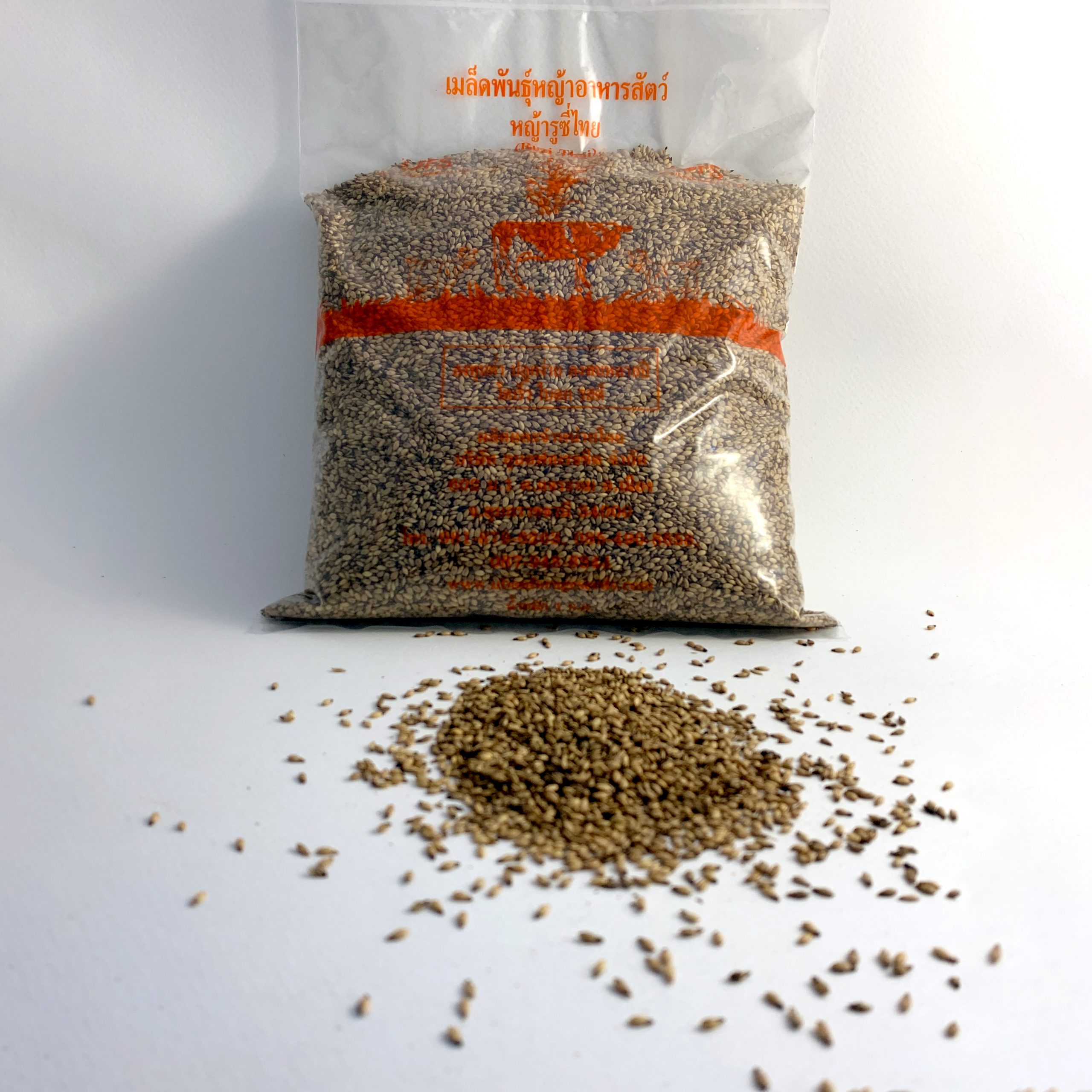Urochloa ruziziensiscv. Ruzi Thai
formerly Brachiaria ruziziensis
Ruzi Thai grass is a medium height, stoloniferous spreading perennial grass, which is used as a grazed pasture forage or cut and fed to tethered or stalled animals. Ruzi grass is very closely related to signal grass. It has short soft hairy leaves whereas signal grass is not so hairy.
Ruzi grass is one of the most widely grown forage grass in Thailand due to its excellent seed production and ease of establishment. Ruzi grass is very palatable and of excellent quality, with crude protein concentrations ranging from 9-15%.
Ruzi grass tolerates a range of soils, but they must be fertile. It does not persist on infertile soils. It grows best on well drained sites and does not like waterlogged, damp, low lying sites. Ruzi grass does not grow well in the dry season whereas Mulato II does.
Because of its high soil-fertility requirements, adequate N must be supplied by either a legume or fertilizer and P and K must also be supplied. It combines very well with Ubon stylo and hamata stylo.
The main attributes of ruzi grass are its good nutritive value, its fast growth early in the wet season, its compatibility with stylo species, its good seed production, tolerance of grazing and ease of establishment. Its main deficiencies are that it must have well-drained fertile soils (does not like damp soils), that it grows slowly in the cool season and that it does not grow very well in the dry season. It is mainly a wet season grass.
Storing the seeds
Ruzi Thai seeds must be stored in a cool and dry room to preserve seed germination. A room temperature of 20-22°C and a room humidity of 40-50% RH will maintain good seed germination for about one year. If storage is only for about one month, then an ordinary air-conditioned room is okay but it must be dry.
Do not store the seed bags on a concrete floor. Always store the seed bags on a raised pallet off the floor. Never place the seed bags against a wall. Maintain a space of 30-40 cm out from the walls of the storage room.
Soil preparation
The fields must be thoroughly cultivated to kill the weeds and produce a fine and even seed bed for good establishment. Firstly, there must be a good ploughing to turn over the soil and bury the weeds. Wait for two to three weeks for the weeds to die. Secondly, disc or rotary hoe the soil to break down the large soil lumps to produce a fine seed bed. Thirdly, harrow the soil to make it even.
Seed sowing
Ruzi Thai seeds can be either planted in rows, 40-50 cm apart, or broadcast sown at 10-12 kg/ha. For drilling the seed through seed drills, be very careful to not bury the seed more than 2 cm depth. Roller drills are preferred because they do not bury the seed.
For broadcast sowings, seed can be spread mechanically or hand sown. The seed must be covered after sowing by harrows or using tree branches or large brooms. Bury the seed no more than 1-2 cm under the soil. If heavy rain is forecast after sowing, the heavy rain will help to push the seeds into the soil.
Ruzi Thai seed is acid scarified by the seed producer to give seed high viability (90%+), high germination (90%+) and high purity (98-99%). This good quality ensures rapid establishment of pastures.
Fertilizer
About 4 weeks after sowing the seeds, apply about 200 kg/ha of NPK fertilizer (15:15:15). If the soils have a low pH (4-5), apply lime at about 1,000 kg/ha after the discing or rotary hoeing and before sowing the seeds.
